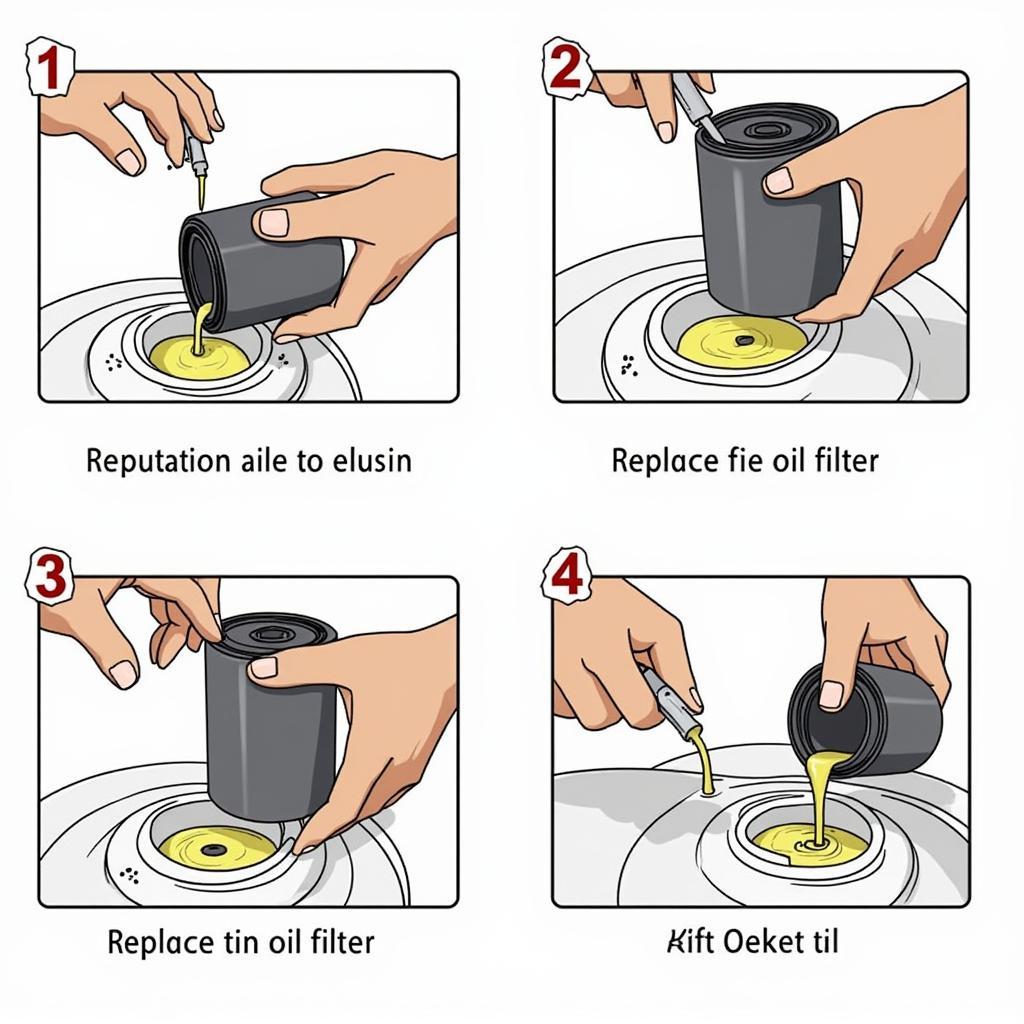A well-maintained car is a happy car, and a happy car means a happy driver. This car maintenance checklist and hands-on lesson provides a comprehensive guide to keeping your vehicle in tip-top shape, whether you’re a seasoned mechanic or a DIY enthusiast. We’ll cover everything from routine checks to more involved repairs, giving you the knowledge and confidence to tackle car maintenance head-on.
Why a Car Maintenance Checklist is Essential
Regular car maintenance isn’t just about avoiding breakdowns; it’s about safety, performance, and saving money in the long run. A well-maintained car is more fuel-efficient, performs better, and holds its value longer. Plus, catching small problems early can prevent them from becoming major (and expensive) headaches down the road.
Essential Tools for Your Car Maintenance Checklist
Before we dive into the checklist, let’s talk tools. Having the right tools makes any job easier. Here are a few essentials:
- Wrench set
- Screwdriver set (Phillips and flathead)
- Pliers
- Socket set
- Jack and jack stands
- Tire pressure gauge
- Jumper cables
- Multimeter
Your Basic Car Maintenance Checklist
This checklist covers the essential checks you should perform regularly, ideally every month or before a long trip.
- Check your fluids: Oil, coolant, brake fluid, power steering fluid, and windshield washer fluid. Top them off as needed. Low fluid levels can indicate leaks or other problems that require professional attention.
- Inspect your tires: Check tire pressure and tread depth. Look for signs of wear and tear, such as bulges or cracks. Rotate your tires every 5,000-8,000 miles to ensure even wear.
- Test your lights: Make sure all your lights are working correctly, including headlights, taillights, brake lights, and turn signals.
- Check your battery: Inspect the battery terminals for corrosion. Clean them with a wire brush if necessary.
- Examine your belts and hoses: Look for cracks, fraying, or leaks. Replace any worn or damaged belts and hoses immediately.
 Checking Car Fluids and Tires
Checking Car Fluids and Tires
Hands-On Lesson: Changing Your Oil
Changing your oil is a fundamental car maintenance task that you can do yourself. Here’s a step-by-step guide:
- Gather your tools and materials: New oil, oil filter, wrench, oil filter wrench, drain pan, funnel.
- Warm up your engine: This helps the oil flow more easily.
- Locate the oil drain plug: Consult your owner’s manual for the exact location.
- Position the drain pan: Place it under the drain plug.
- Remove the drain plug: Let the old oil drain completely.
- Replace the drain plug: Tighten it securely.
- Remove the old oil filter: Use an oil filter wrench.
- Lubricate the new oil filter gasket: Apply a thin layer of new oil.
- Install the new oil filter: Hand-tighten it according to the instructions.
- Add new oil: Consult your owner’s manual for the correct amount.
- Check the oil level: Use the dipstick.
- Start the engine: Check for leaks.
“Regular oil changes are like giving your car a vitamin boost. It keeps the engine running smoothly and prevents premature wear,” says John Smith, ASE Certified Master Technician.
 DIY Oil Change Steps
DIY Oil Change Steps
Car Maintenance Checklist and Hands-On Lesson: Conclusion
Following a car maintenance checklist and taking on some hands-on tasks can save you money and keep your car running smoothly. While some repairs may require a professional, many routine maintenance tasks are within the reach of the average car owner. Remember, a little preventative maintenance goes a long way. Need help? Contact AutoTipPro at +1 (641) 206-8880 or visit our office at 500 N St Mary’s St, San Antonio, TX 78205, United States.
FAQ
- How often should I check my tire pressure? Monthly, or before a long trip.
- What type of oil should I use for my car? Consult your owner’s manual for the recommended oil type and viscosity.
- How often should I change my oil? Every 3,000-5,000 miles, or as recommended by your owner’s manual.
- What are the signs of a failing battery? Slow engine cranking, dim headlights, and clicking sounds when you turn the key.
- How can I tell if my brakes need to be replaced? Squealing or grinding noises, a spongy brake pedal, or vibrations when braking.
- What should I do if my check engine light comes on? Get your car diagnosed by a qualified mechanic as soon as possible.
- How can I improve my car’s fuel efficiency? Keep your tires properly inflated, follow the recommended maintenance schedule, and avoid aggressive driving.




Leave a Reply